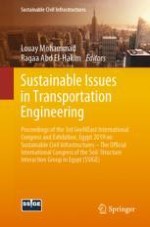
2020 | OriginalPaper | Chapter
In-Situ Monitoring of Ground Subsidence at the Intersection of Expwy 78 and High Speed Rail of Taiwan During 2003–2011
Authors : Muhsiung Chang, Ren-Chung Huang, Po-Kai Wu
Published in: Sustainable Issues in Transportation Engineering
Publisher: Springer International Publishing
Activate our intelligent search to find suitable subject content or patents.
Select sections of text to find matching patents with Artificial Intelligence. powered by
Select sections of text to find additional relevant content using AI-assisted search. powered by